There are actually many reasons why jeans require treatment. For example, buying without trying them on. Those who have encountered this situation may have asked themselves, “How do I make jeans narrower at the bottom, waist or hips?” There are several ways to make jeans fit your figure.
How much can you make jeans narrower?
How to take in jeans correctly and how much they can be narrowed. In fact, there are quite a few ways, and the amount of fabric that needs to be removed depends on the owner of the item. The future shape of the jeans is obtained taking into account the height and build of the person. Jeans can be hemmed both "by eye" and using a constructed pattern. The shape will also depend on preferences and the desired length of the item.
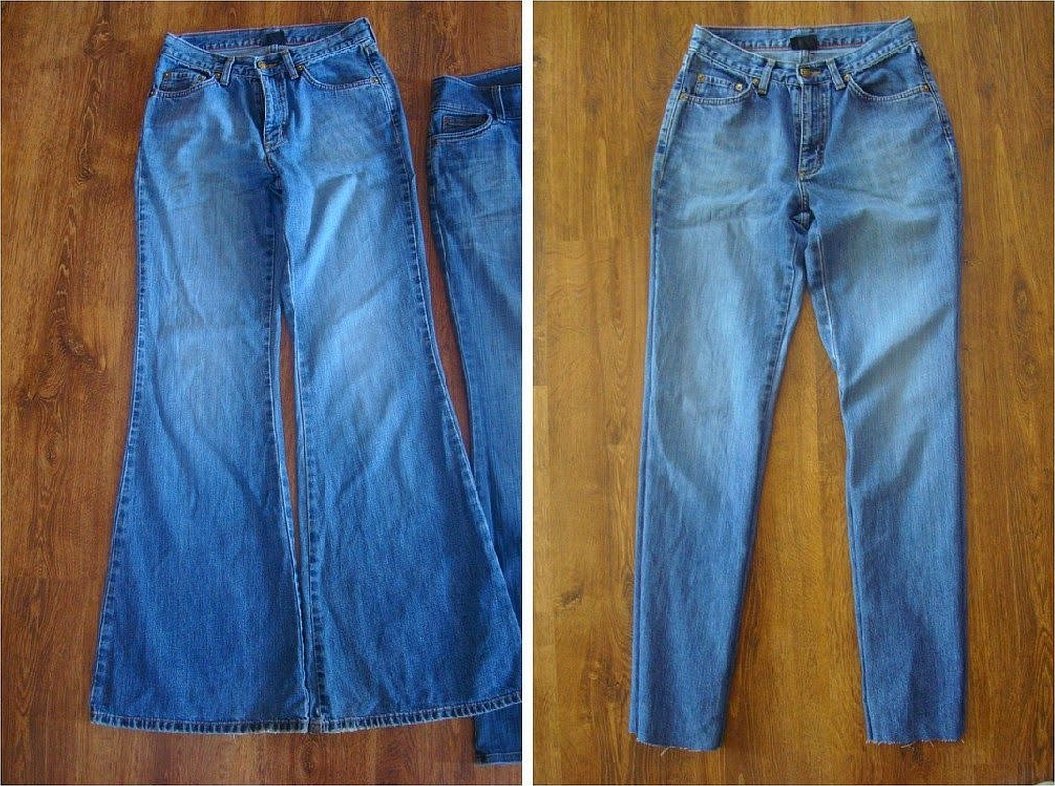
To sew in jeans, you can use other pants as a basis, which will become a sample of the required length and shape. To work with them, you just need to put the items next to each other and outline the place where the seam will be later.
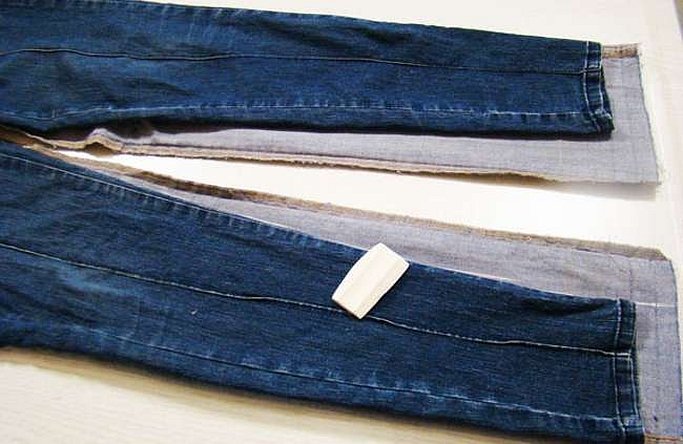
To reduce the size of the item (without using a pattern), you will definitely need pins or small clothespins. After basting the seam, remove them.
Please note! The new look of the pants is a choice based on personal preference. However, it is worth considering that you need to try on the jeans before sewing. The leg should be easy to put on the leg.
Preparing the model
Before you start sewing jeans, you need to prepare the model for work. Pants can be hemmed not only at the bottom, but also in other places where it is necessary. If the goal is to narrow the item at the bottom, then the product is turned inside out and the lower seams are ripped out, which are then ironed well.
It is worth noting that both women's and men's pants are sewn according to the same principle. The final result will depend only on the preference of the person.
Please note! The following life hack may help: before taking in jeans at the waist, they should be washed at least once. This will prevent the item from “shrinking” in the future.
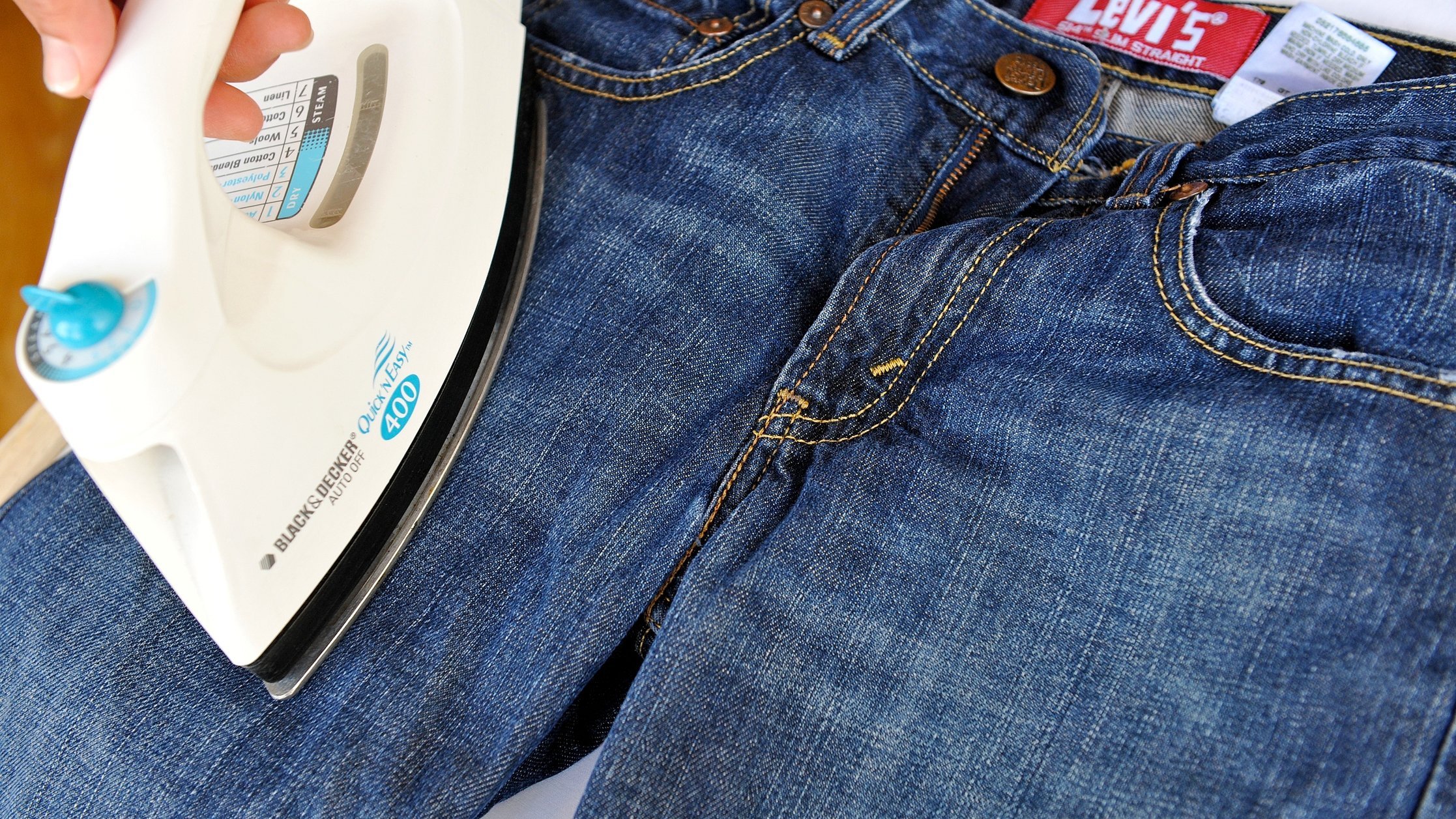
Preparation for taking in the hips consists of cutting the side seams (which are higher), and to reduce the waist, the item is ripped open at the back. When ironing, special attention should be paid to the seams, so that it is easier to work with them later. When cutting, it is important to be careful not to cut off too much or make a crooked line.
The following tips may be useful when sewing:
- While working, you should try on the item several times to make sure there are no inaccuracies.
- If you have trousers in your wardrobe that match the required style, you can use them as a template.
- Don't rip the pants completely. The seams in the crotch area are quite problematic to sew on your own, especially for beginners.
- It is worthwhile to specially purchase strong threads if you do not have any. Thin ones can break at any moment, and the whole work will be ruined.
- It is recommended to process the cut edges with an overlock or zigzag stitch, as denim fabric tends to “crumble”, and this will damage the item when worn.
Necessary tools
How to make jeans narrower, and what tools are needed for this? For high-quality work, you will need a fairly large number of materials. Denim fabric is dense, as are the seams, so you need to work with it carefully. Some tools are selected just for this density. In order to make jeans narrower, you will need:

- Electric sewing machine.
- If possible, use an overlock for stitching. If you don't have one, use the zigzag mode on the machine.
- Scissors. For thick fabric, tailor's scissors are best.
- A piece of chalk or a bar of soap.
- Threads and needles for sewing.
- Long ruler or tape measure.
- Iron.
If you don’t have tailor’s scissors, you can use regular ones, but they will be a bit more difficult to work with, especially when cutting seams.
Algorithm of work
The stages of work may differ depending on where you need to remove excess fabric. Usually, you need to narrow it at the waist or bottom. It is not so important how best to take in wide jeans at the waist - by hand or with a machine. The main thing is to follow the step-by-step instructions, which are suitable for both denim breeches and shorts.
The easiest way:
- Several darts are marked in the waist area and then carefully ripped out.
- Next, the darts are stitched (by hand or with a machine).
- The remaining material is cut off and the belt is sewn back on.
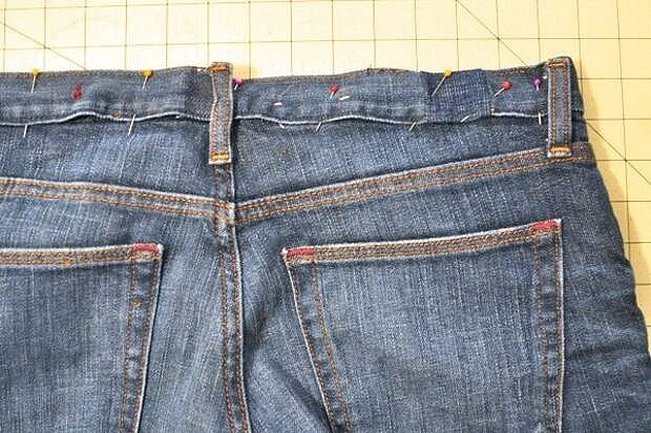
It is worth remembering that if you have any doubts about working with clothes yourself, you can always go to a studio. There, wide trousers will lead to the desired style quickly and efficiently. In some cases, this is really the right decision. For example, this applies to very expensive things that you do not want to ruin when sewing. Prices in the studio vary depending on the city and prestige. Usually, the service of taking in trousers costs the client 400-600 rubles. * Everything also depends on where you need to remove excess fabric. You can go to the studio if you do not have an overlock or machine at home - the processing will cost 50 rubles / m.
Along the side seams
Side seam stitching is used when the legs are wide at the very bottom, at the calves and slightly above. Usually, flared trousers are processed, which are not liked for their shape, and the trousers are not the right size.
The following algorithm will tell you how to take in jeans at the legs:
- First, you need to try on the jeans to understand where and how much to take in. The selected areas are secured with pins.
- It is worth checking again before altering how the item fits your figure.
- Place the jeans on a hard, flat surface and straighten them out well so that there are no creases left anywhere.
- Using a piece of soap, draw a line of the future seam where the pins will be attached.
- Excess fabric is swept away from the item using thread.

- The pants are tried on again to check for any flaws. It is worth noting that if the jeans are long, they are first shortened to the desired size (but not stitched), and only then the excess is removed from the sides.
- Excess fabric is cut off, leaving an allowance of 1-2.5 cm.
- Then, the edges are processed with an overlock or a zigzag stitch. The thread is selected in accordance with the shade of the jeans. Processing the edges is necessary, because the cut fabric quickly deteriorates and crumbles.
- After processing, they begin stitching new seams, carefully connecting them with the old ones.
- The product is ironed and tried on.
If there are no defects, the excess threads are removed.

Stitching
To make new jeans look finished, topstitching is done. This is necessary so that the inner seam does not look too rough.
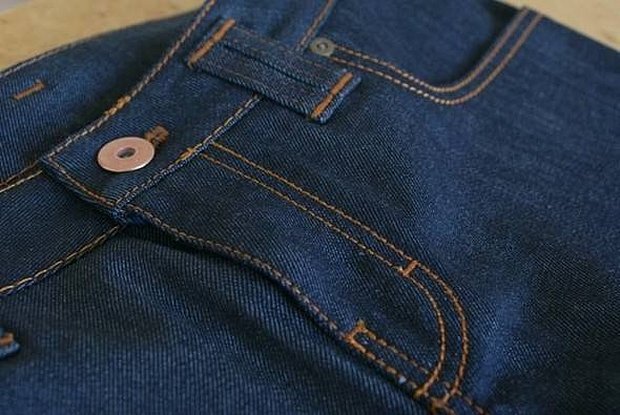
- You need to take threads that match the color of the existing stitching.
- An approximate seam is applied, imitating a factory one.
- The item is ironed. At this stage, the bottom of the trousers is folded and stitched.
In order for the stitching to look neat, it is recommended to take thick threads or connect 2 thin ones. In the place of the shuttle, it is allowed to use black threads.
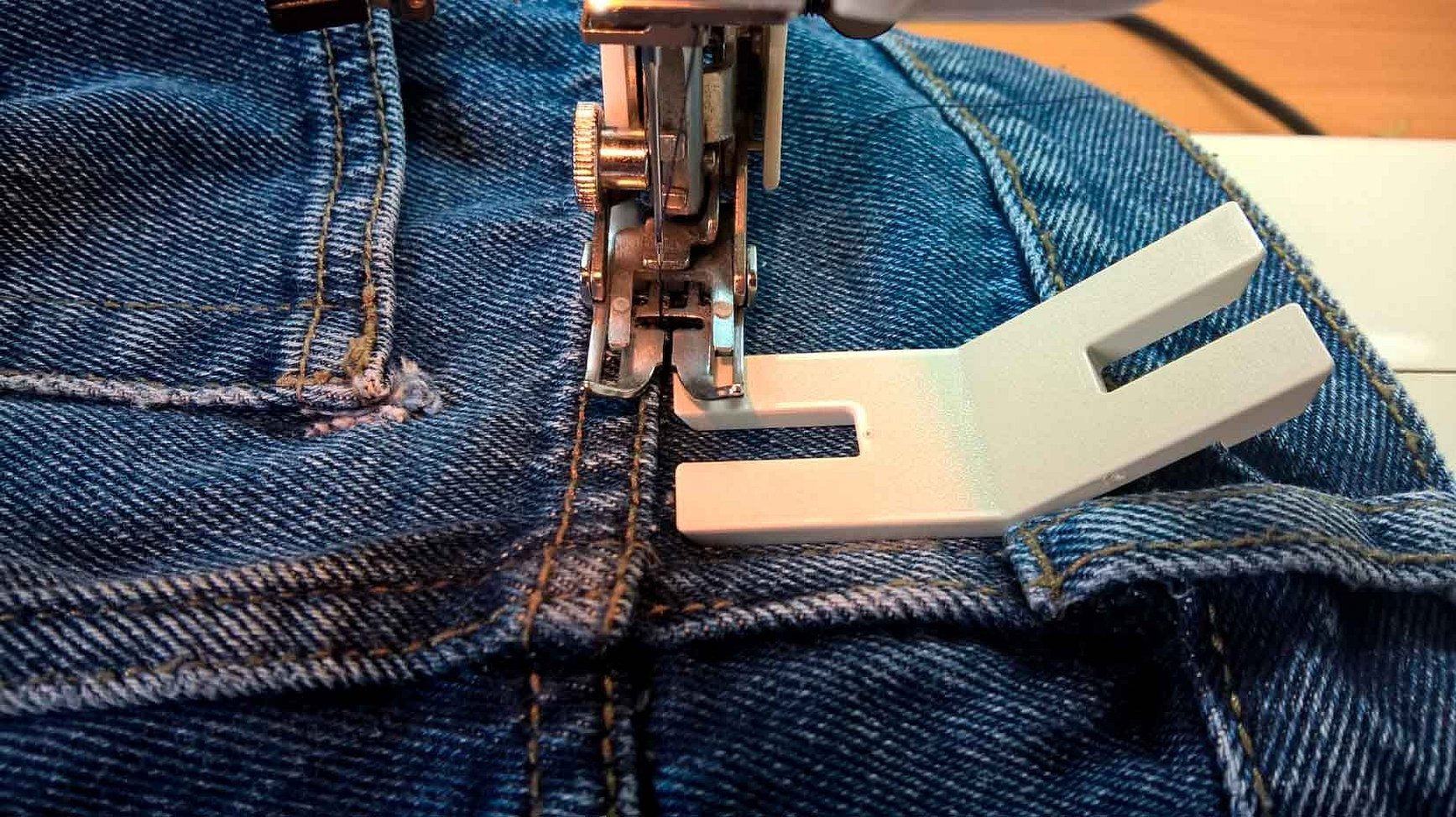
Method using old trousers
How to sew in wide jeans using old pants? The technique is not much different from stitching along the seams and waist. In this case, the "ruler" will be old home jeans that fit the shape of the legs and length. However, when using this method, you need to take into account some working conditions.
- You need to work with two items on a flat surface, preferably one that is wide enough to accommodate the jeans.
- The old product must be fixed. If the jeans constantly "slide" off each other, drawing future seams and making basting will be quite problematic. Re-sewn jeans may turn out uneven.
- When working, it is important to take into account any defects in the sample, they can complicate the work a little. For example, if the pants are stretched at the knees or there are cuts there, you need to straighten the product well.
- After taking measurements and basting the fabric, it is still worth trying on new jeans, even if the sample fits perfectly.
Using old jeans as a pattern is a fairly simple method, suitable for those who do not want to create a pattern. This method is quite universal - it can be applied not only to jeans, but also to other types of trousers.
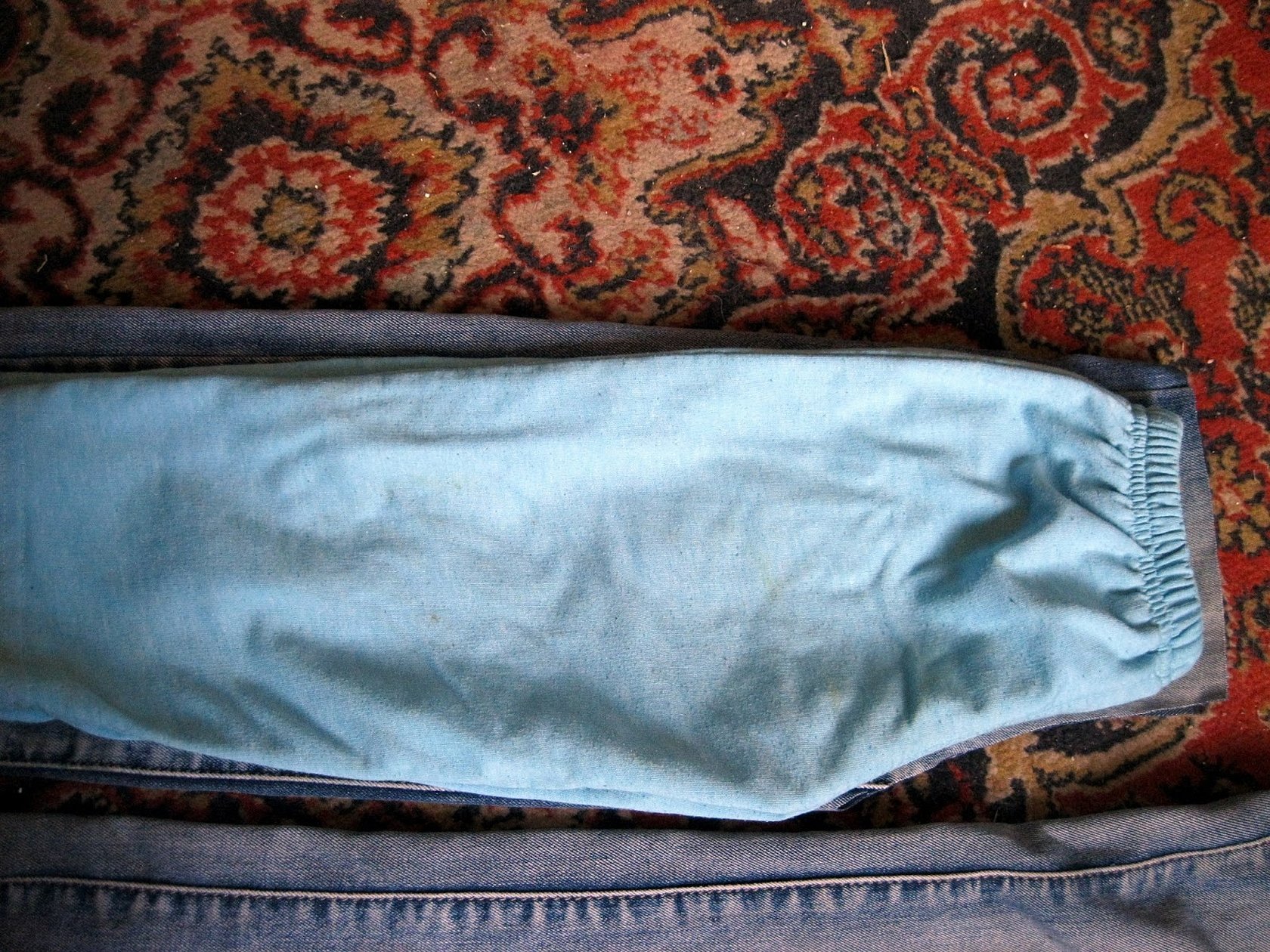
Method using a pattern
Pattern making is a complex method of narrowing a garment, requiring certain knowledge and skills. However, only thanks to it can a high-quality and accurate result be obtained. In addition, the constructed template can help in the future if you need to remake several more pairs of pants.
To make a pattern for future trousers, you can use the following method:
- A piece of wallpaper can be used for construction. The jeans that have a suitable shape are ripped and the resulting parts are smoothed out.
- One part is placed on paper and the outline is transferred.
- The item that needs to be altered is also ripped open in the right places. The cut-out pattern is placed on it and outlined with a piece of soap or chalk. It is important not to forget to leave an allowance for stitching.
- The trousers are sewn on a sewing machine according to the pattern.
- Then the product is turned back to the front side and topstitched.
At the very end, the bottom is also processed, as in the method without a pattern.
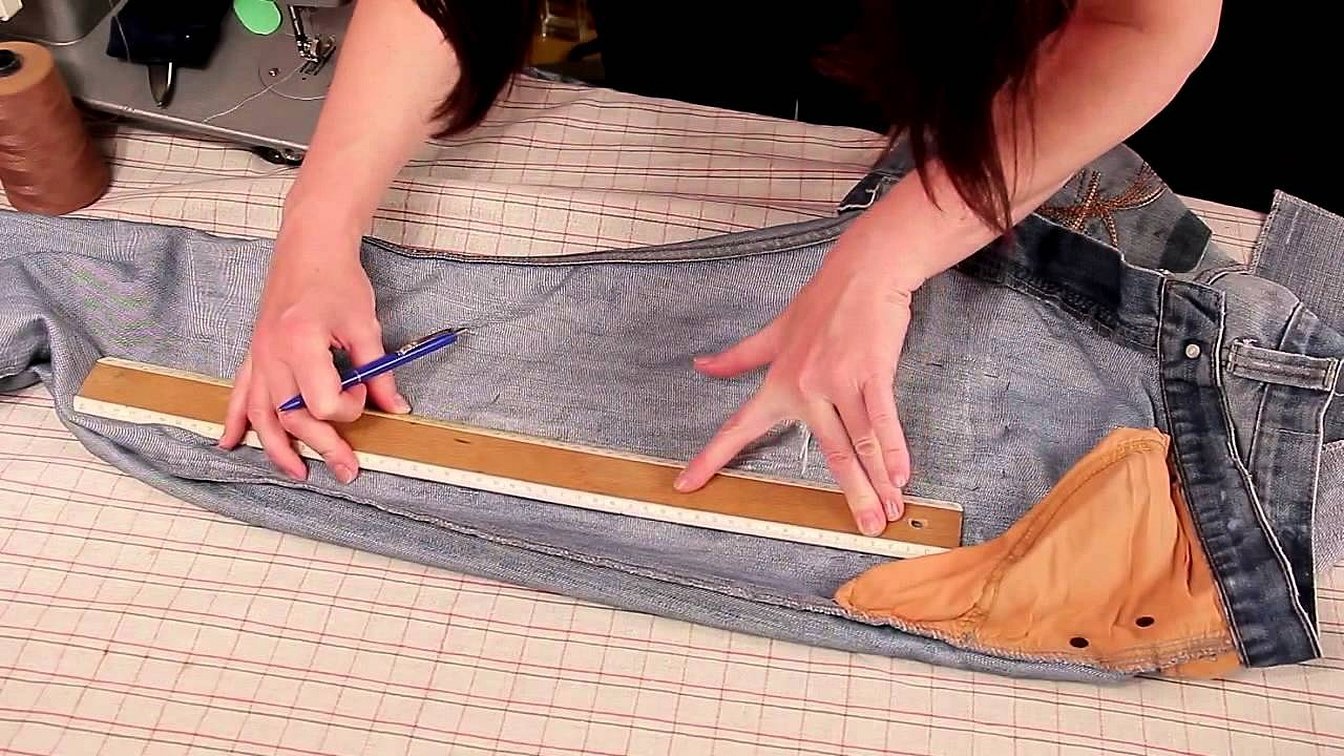
Without using a machine
How to make jeans narrower without using equipment? It is quite possible to do it yourself, even without using a needle and thread.
- You need to put on jeans and stand in front of the mirror.
- The required width is fixed by hand on one leg.
- The excess should be folded to the left side.
- The folded fabric is held at the edge, and then the leg is folded as many times as necessary until the desired width is achieved.
- If the result is satisfactory, the same is done with the other part of the jeans.
This method is good because it does not require any additional tools. In addition, it is considered "reusable" - with its help you can try different lengths and widths on the same jeans, each time creating a new image. At first, this method may seem difficult, but if you do everything slowly, following the instructions, in the end everything will work out.
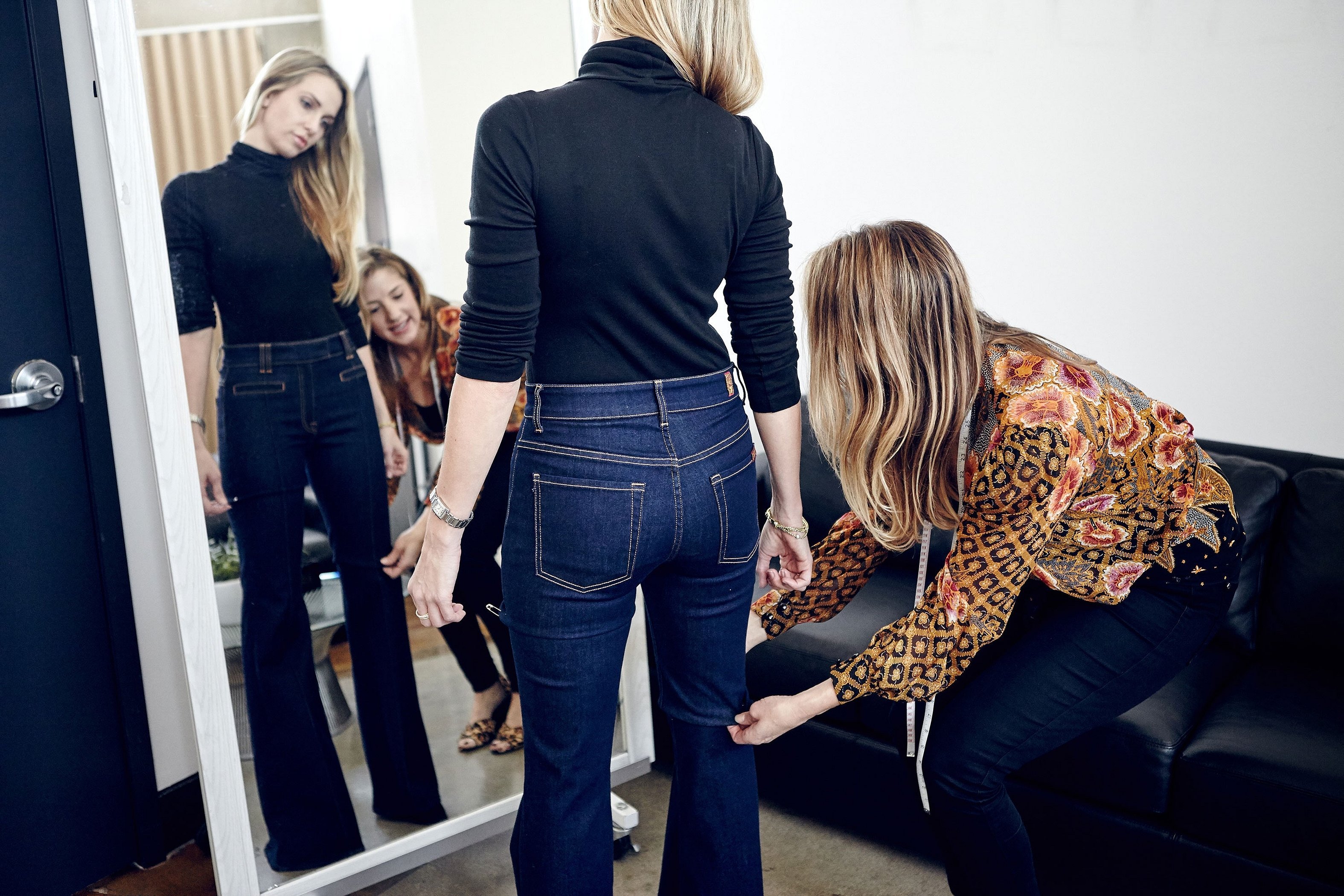
Thanks to such a variety of methods, the question "how to make jeans narrower?" no longer arises. From all the listed methods, you can choose the one that you like. But do not forget that you can always contact the studio if you are not confident in your skills.
*Prices are valid as of August 2019.




